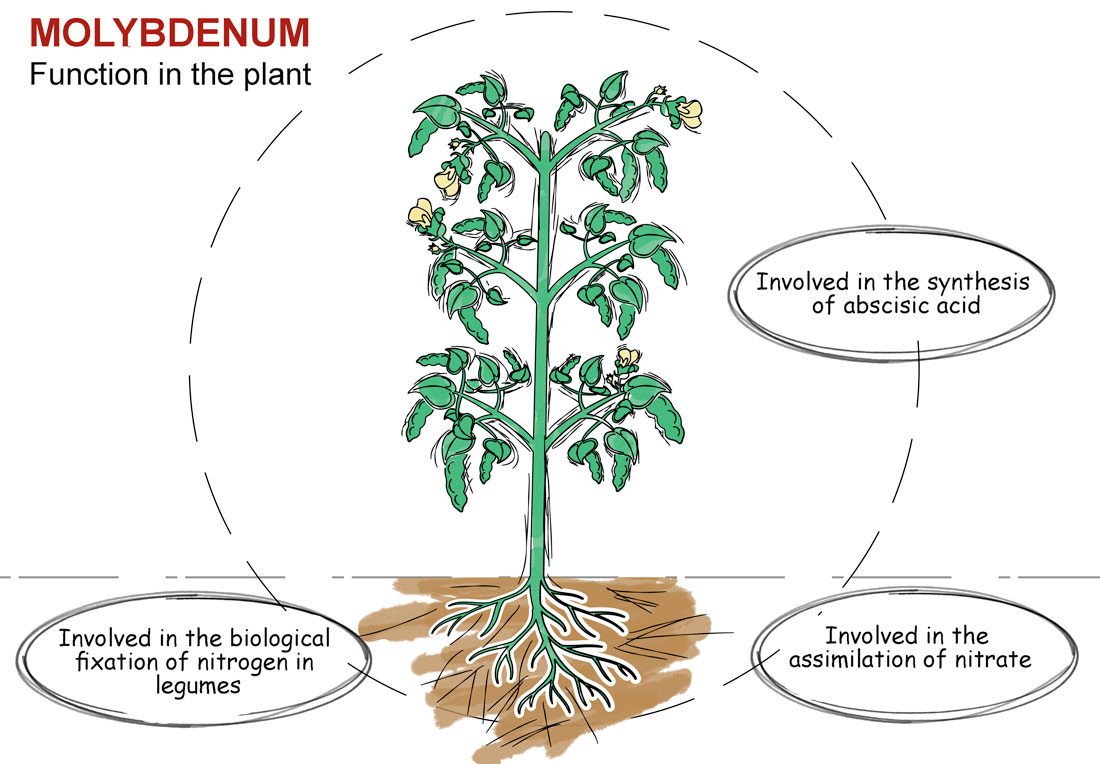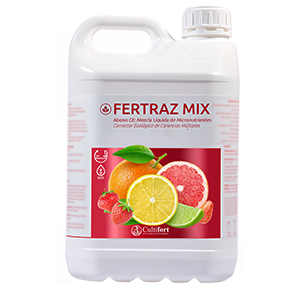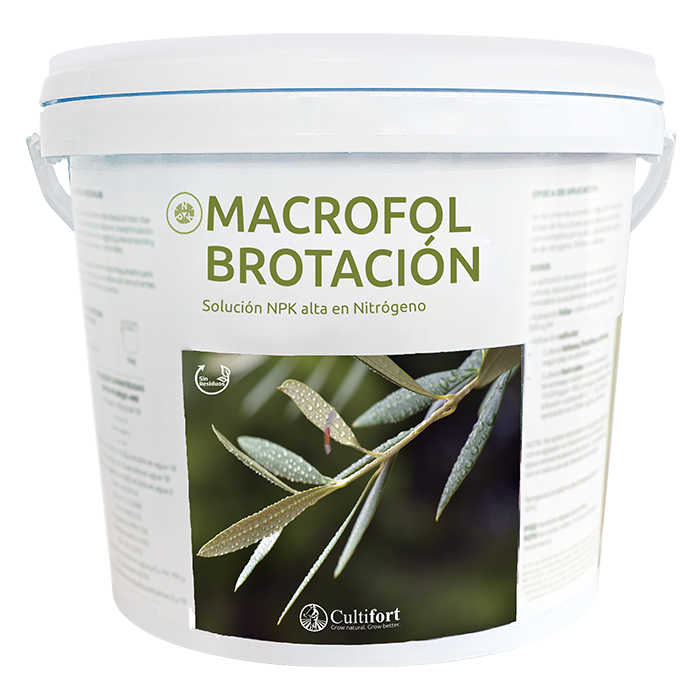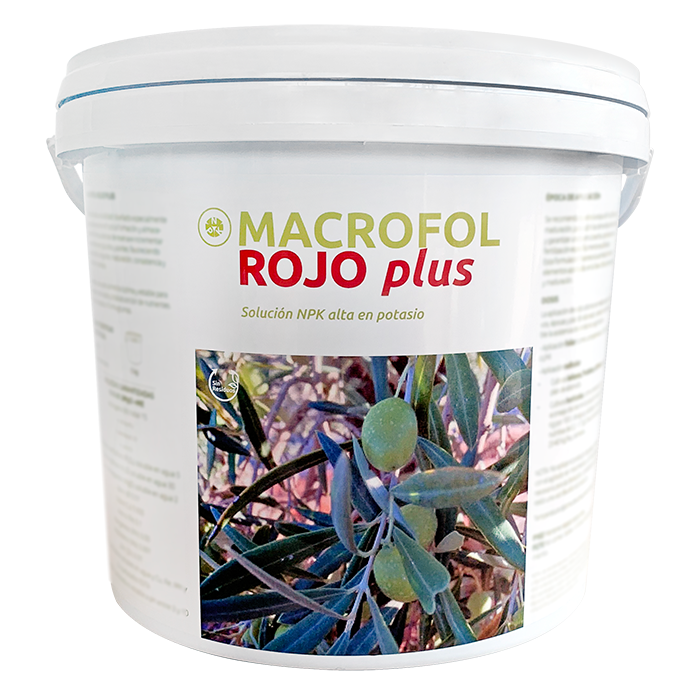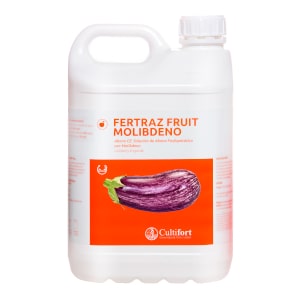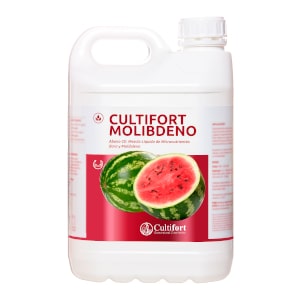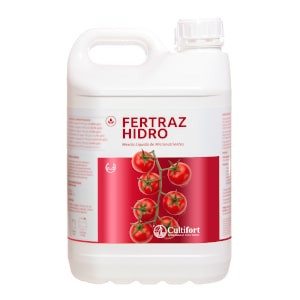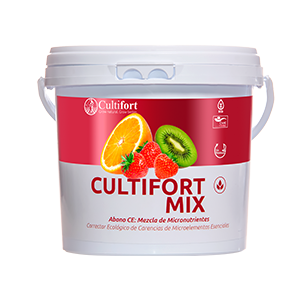Mo
Molybdenum (Mo)
Molybdenum
The key role of molybdenum in the plant is due to its contribution to redox reactions, being part of many oxidoreductases, enzymes, essential systems in plant metabolism.
In this sense, its action is especially important in nitrate reductase, a key enzyme in the assimilation of nitrate, by intervening in the reduction of nitrates to nitrites.
It is part of the nitrogenase enzyme, essential in the biological fixation of nitrogen.
It is also a constituent of xanthine dehydrogenase oxidase, the enzyme responsible for the catabolism of adenine and guanine.
Lastly, it may be involved in the formation of abscisic acid (ABA), by being a structural element of the enzyme that generates it.
ABSORPTION
Molybdenum is present in the soil mainly as molybdate salt (MoO4-2) or (HMoO4-), and as MoS2 molybdenite. The plant absorbs it as MoO4-2.
DEFICIENCIES
Boron requirements for the plant are quite low and it is uncommon to find deficiency situations. However, if this deficiency occurs, as it is a mobile element, the symptoms occur in the intermediate leaves and in the older ones, spreading towards the stem and affecting the new leaves.
Occasionally, the entire leaf turns pale, and necrosis could occur at the edges.
Molybdenum is related to nitrogen, so its deficiency may resemble the one of these macronutrients.
CULTIFORT PRODUCTS FOR THE LACK OF MOLYBDENUM
